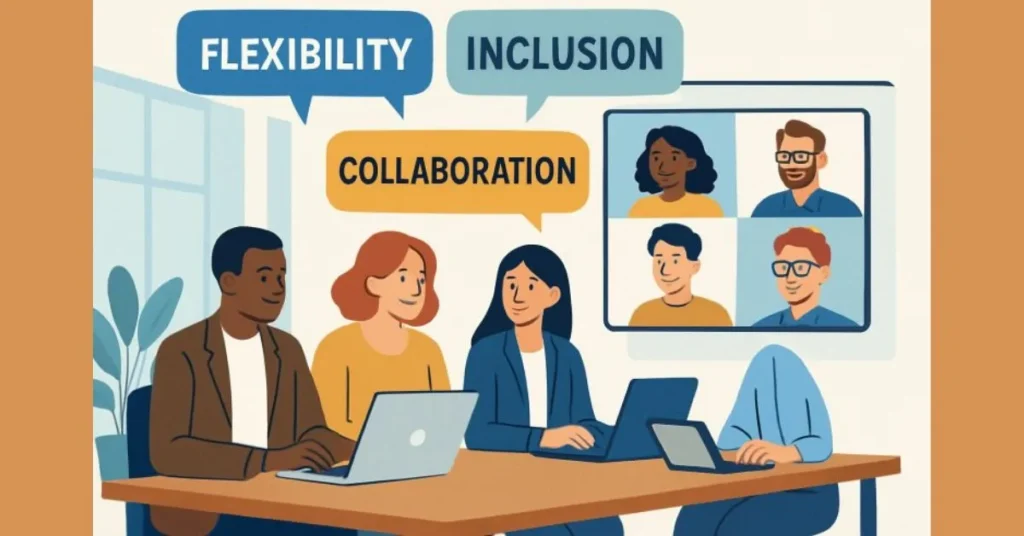Contents
Introduction
Attracting and securing the right talent as businesses scale becomes even more critical. Competitive growth hinges on a deliberate and structured approach to hiring, grounded in both efficiency and organizational values. Creating a seamless enterprise hiring process ensures that growing organizations can identify, attract, and successfully onboard the best-fit candidates while maintaining agility in an ever-evolving market.
The demand for top performers only intensifies as digital transformation reshapes business priorities. Factoring in evolving candidate expectations, rapidly changing industry standards, and continually shifting hiring landscapes requires organizations to refine their strategies to maintain an edge continuously. By integrating modernized hiring practices, companies position themselves to thrive through sustainable talent acquisition, offering jobs and clear opportunities for impact and growth.
Embracing Skills-Based Hiring
Relying on traditional hiring standards such as formal education and degree requirements can dramatically narrow a company’s access to high-quality candidates. Instead, adopting a skills-based hiring philosophy emphasizes a candidate’s practical expertise, relevant certifications, and real-world competencies. This shift opens the door to talent from non-traditional backgrounds, increasing the organization’s access to innovation and fresh perspectives. Recognizing expertise and adaptability, organizations like IBM have dropped college degree requirements for over half of their roles, focusing instead on capabilities and training.
Leveraging AI and Automation
Recruitment technology powered by artificial intelligence (AI) and automation dramatically enhances the speed and accuracy of talent acquisition. Automated screening tools can quickly process hundreds of applications, identifying the most qualified based on precise criteria and reducing the administrative burden on recruiters. AI chatbots can handle initial candidate queries and assessments, freeing up recruiters to focus on relationship building and strategic hiring decisions. As organizations scale, these tools ensure consistency and fairness in processes while reducing time-to-hire and improving candidate experiences.
Enhancing Employer Branding
A compelling employer brand is essential for attracting high-quality applicants who resonate with your organizational mission and culture. Communicating a clear employer value proposition through authentic employee testimonials, visual storytelling on social platforms, and transparent information about benefits and advancement opportunities increases candidate engagement. According to a Harvard Business Review analysis, organizations that consistently invest in employer branding attract better talent and experience improved retention. Highlighting inclusivity, purpose-driven initiatives, and career growth further differentiates your organization in a competitive landscape.
Prioritizing Diversity and Inclusion
Diverse teams bring unique viewpoints, foster innovation, and more accurately reflect diverse customer bases. Proactive diversity and inclusion (D&I) efforts—such as using inclusive language in job descriptions and partnering with organizations that serve underrepresented groups—help cast a wider net. Leaders must hold themselves accountable through regular reviews of D&I initiatives, ensuring measurable progress and ongoing commitment. Updating policies, removing barriers, and celebrating differences should all be standard practices to ensure your hiring is as inclusive as possible.
Offering Flexible Work Arrangements
Today’s candidates often seek flexible schedules, remote work options, and adaptable environments that align with their lifestyle and personal priorities. Offering remote or hybrid roles can broaden your talent pool beyond geographic limits and increase employee satisfaction and retention. Flexible work appeals to more diverse candidate segments and positions your organization as forward-thinking and empathetic to modern workforce needs.
Streamlining the Application Process
Streamlined applications are no longer optional. Lengthy, redundant, or overly complex processes can cause top talent to abandon applications. To meet modern expectations, make instructions clear and requests concise, and ensure mobile compatibility. Providing status updates and timely feedback throughout each stage helps keep candidates engaged and ensures a more positive overall experience. Continuous optimization of this process through candidate feedback enhances hiring efficiency and employer perception.
Building Strong Employee Referral Programs
Employee referrals are among the most effective sources of quality hires, as current staff tend to recommend candidates who align with company culture and values. Successful referral programs include clear guidance, attractive incentives, and recognition for staff who succeed in hiring. Analyzing program data ensures optimal results and maintains a steady pipeline of motivated, pre-vetted applicants.
Investing in Internal Talent Development
Developing existing employees through targeted training, mentorships, and well-defined career paths is both cost-efficient and morale-boosting. Internal mobility allows organizations to fill roles quickly with trusted employees while demonstrating a clear commitment to staff growth. Forward-thinking organizations offer various upskilling options that increase engagement and retention, such as leadership programs, cross-functional projects, and continuing education stipends. Investing in your current workforce helps bridge skill gaps and strengthens your employer brand as a destination for ambitious professionals
By embracing these strategies, growing organizations can create a robust, modernized approach to recruitment and talent management. This foundation supports long-term success and helps organizations remain competitive and adaptable in a rapidly changing talent marketplace.

